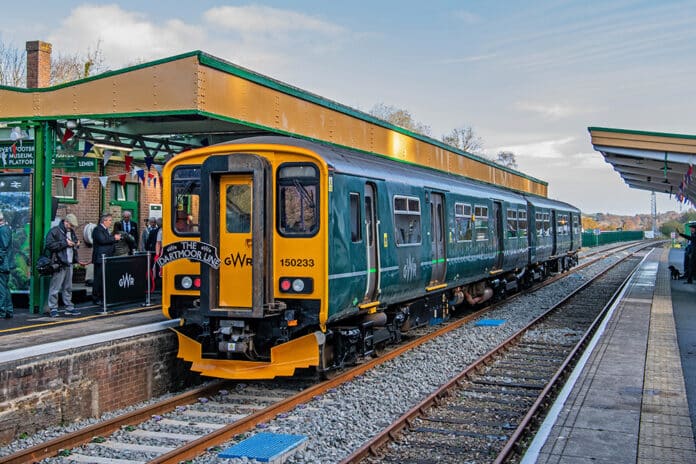Infrastructure consultancy AECOM delivers critical projects to clients across the
globe, providing specialised support with design, build, financing, and operation.
In the UK, five regional teams play a key role in some of rail’s most
transformative infrastructure programmes.
Regional Director Karl Hatala oversees the rail sector in Wales and Western,
where new ways of working are delivering efficiencies and cost savings for their
clients. Speaking to Rail Business Daily, Karl discussed Network Rail’s approach
to SPEED, reflected on the current control period, and explained how innovation
could help the industry to address key future challenges.
Can you give some examples of what’s worked well in your region in the
current Control Period?
AECOM has integrated well with Network Rail during this control period. We are
one of its trusted suppliers, and on several frameworks, meaning we can
mobilise quickly when required. A case in point is the recent Dartmoor Line.
For the first time in nearly 50 years, in November 2021 regular passenger
services started on the Dartmoor Railway Line, connecting Okehampton to
Exeter. This project was the first railway reopening under the UK government’s
‘Restoring Your Railway’ initiative, aimed at restoring railway lines closed by the
Beeching railway reforms of the 1960’s, reconnecting communities to economic
opportunity.
Design work started in April 2021. Collaboration and teamwork played a key part
as we applied SPEED principles to move the project through feasibility, detailed
design and into construction in just 8 months.
We’ve been realising efficiencies in the South Rail Systems Alliance (SRSA) too,
by merging the Contractor’s Responsible Engineer and discipline Project Engineer
roles to reduce duplication of effort, streamline teams and accelerate decision
making, with Network Rail benefitting from the resulting efficient delivery and
cost savings.
We’ve realised further efficiencies by challenging scopes, collaborating closely
with framework partners, and deploying specialist dedicated teams to maximise
continuous improvement by applying lessons learned on one project immediately
onto the next.
Are there any lessons learnt from the current Control Period to take
forward into CP7?
Yes, AECOM has been able to build its design teams to be sustainable by being
on long term frameworks and alliances. Being able to understand future work
volumes enables us to recruit, develop and train resources providing mutual
benefit to both us and our clients. We would encourage Network Rail to continue
to share its pipeline and progress with its plans for deeper and more strategic
partnerships with their suppliers. This will promote improved efficiency and the
sustainability of our industry.
How will you build on the efficiencies realised during CP6?
The principles of SPEED, PACE and MVP are aligned to AECOM’s values and are
already beginning to deliver the intended results for the rail industry, however, to build on these gains a ‘one team’ approach is key.
In CP7, we’ll look to build on collaborative working with framework and alliance
partners to ensure the best team for the job is put forward to maximise
successful outcomes for projects. Internally, AECOM will continue to embrace a
systems-based approach to design, to provide our clients with access to the best
people within our global business to deliver their requirements.
On the SRSA, we’ll continue to embed PACE and self-assurance to achieve true
concept to hand-back delivery of the track and systems renewals and
enhancements portfolio.
What are the priorities and key objectives in your region and how can
the industry achieve them?
We’re focused on supporting Network Rail’s adoption of the ‘intelligent client’
model which amongst other things requires designers to work directly with
contractors. This is a change from the current relationship of Network Rail being
the client, as each contactor will have different requirements and ways of
working that will need to be understood.
We’re also remaining committed to demonstrating to both stakeholders and
funders how we can provide ‘best value’ solutions while continuing to provide
good service – because ultimately, it’s taxpayers’ money.
What new ways of working are you looking forward to implementing
over the next few years?
We’ll continue to evolve the best practices established through CP6. We’ll extend
positive working relationships within project teams, stakeholders, and
contractors by using the principles of good alliancing developed over the course
of our long-term SRSA contract.
Maintaining quality of our deliverables is critical so we’ll embrace modern
technologies and processes to improve our efficiency at managing information,
risk, and hazard management.
CP6 was an extraordinary period, particularly in terms of the
pandemic’s impact. Has this changed your view of the benefits of rail?
Although passenger numbers were down during the pandemic, rail remained
essential during this period for the continued movement of freight (including
food, medicines, and equipment) and to facilitate the commute of essential
workers. Our rail teams became essential workers as our survey, design,
renewal, and maintenance activities continued during this time to keep the
railway open.
With so many stunning landmarks and vistas, Wales and Western may have been one of the busiest networks during the pandemic, due to the rise of the ‘staycation’ and more people opting to explore the area by train.
There’s also the levelling up agenda, reconnecting communities to economic
opportunities as demonstrated in Dartmoor and as we’re continuing to do
through our recent appointment on the Cornwall Mid Metro project.
Finally, utilising rail freight rather than road freight is assisting with the reduction in carbon and getting us to net zero, we saw more freight terminals being developed during CP6, and there’s exciting growth in this area.
In short, the last control period demonstrated that having a robust rail network is more important than ever for our region.







































 0113 2082620
0113 2082620 info@railbusinessdaily.com
info@railbusinessdaily.com 15 Mariner Court, Wakefield WF4 3FL
15 Mariner Court, Wakefield WF4 3FL

